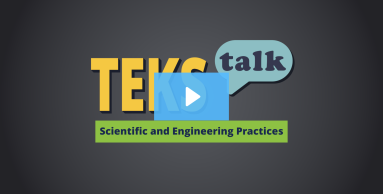- Science
- Grade 9
- Scientific and engineering practices
Back to TEKS search
BIO.1.F
The student is expected to organize quantitative and qualitative data using scatter plots, line graphs, bar graphs, charts, data tables, digital tools, diagrams, scientific drawings, and student-prepared models;

Knowledge and Skills Statement
Scientific and engineering practices. The student, for at least 40% of instructional time, asks questions, identifies problems, and plans and safely conducts classroom, laboratory, and field investigations to answer questions, explain phenomena, or design solutions using appropriate tools and models.
Supporting Information
Research
Hunter-Thomson, Kristin. “Data Literacy 101: How Do We Set up Graphs in Science?” Science Scope 42, no. 2 (2018): 78–82. https://www.jstor.org/stable/26611838.
Summary: Beginning with considering the type of data provided and the information needed to convey, "How Do We Set Up Graphs in Science?" shares how to determine appropriate graphs for communicating specific data with various audiences. A variety of graph types are explained, as well as the established criteria for each graph.
